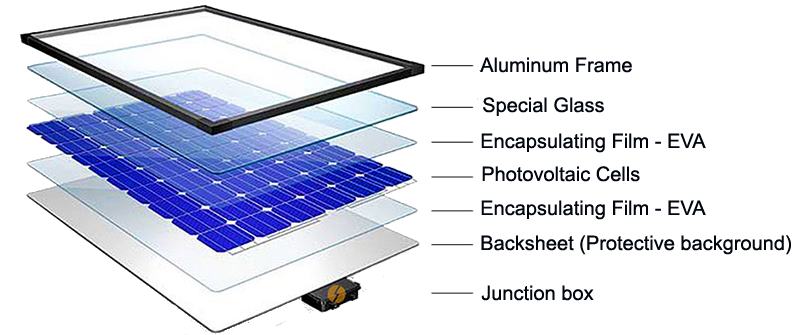The solar panels are composed of structures called photovoltaic cells, which have the property of creating a difference of electric potential by the action of light.
The materials most frequently used for the manufacture of these cells are crystalline silicon and gallium arsenide, and may have different dimensions, voltages and powers for the most different uses.
The cells absorb the energy of the sun, causing the electric current to flow between two layers with opposite charges..
Panel Composition

Efficiency
When we talk about efficiency of the photovoltaic solar panel, we talk about the percentage of energy of the sun that reaches the surface of the photovoltaic panel and is transformed into electric energy for our consumption.
The greater the efficiency of the photovoltaic panel, the more Watts per m² the system will generate, and the lower the panel will be for the same power output.
The efficiency of the cells used in the panels can be 16% to 28% and are as a light sensor, attracting it to be stored.
Advantages
It is a renewable energy, and can be used without having to have a power pole nearby. The solar panels, after installed, have little maintenance and can last for several years and most important, does not harm the environment.